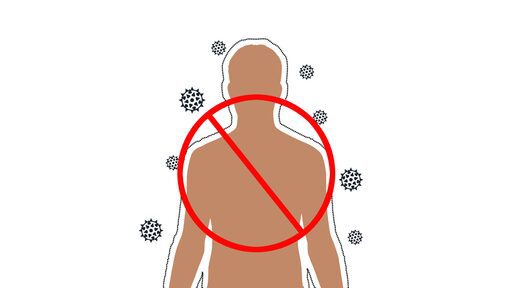
Immunity Definition
It is the ability of a body to fight against disease-causing microorganisms is called immunity. the following article is about the Difference between active and passive immunity.
Immunity Classification
Immunity is broadly divided into two main categories
- Innate immunity
- Acquired immunity.
Innate immunity
Another name for innate immunity is inborn immunity is refers to a non-specific type of defense element with which an individual is born and is always there to protect the body from general diseases.
It consists of four types of barriers
1. Physical barriers
Skin and mucus are two major barrier systems that come under physical barriers. The mucus of the epithelium lining of the respiratory, gastrointestinal, and urogenital tracts traps the microorganisms from entering our body.
2. Physiological barrier
Secretions like acid from the stomach, the saliva of the mouth, and tears come under physiological barriers that prevent microbial growth.
3. Cellular barriers
Leucocytes like WBC and monocytes, natural killers in the blood as well as macrophages in the tissues act as cellular barriers.
4. Cytokine barriers
Many non-infected cells are protected by interferons which are a type of proteins secreted by virus-infected cells.
Acquired immunity
This immunity develops in the body in response to the pathogens. This immunity is characterized by the memory either by encountering the disease or by vaccination. Acquired immunity is further classified into active and passive immunity. The definition and the difference between active and passive immunity are as follows
1. Active immunity
When the body is exposed to antigens in the form of living or dead microbes or other kinds of proteins, antibodies develop.
This type of immunity is known as active immunity. It is slow and relatively takes a longer time to fully develop. This immunity is developed either by vaccination known as artificial active immunity or during natural infection known as natural active immunity.
2. Passive immunity
This immunity develops when ready-made antibodies are directly given to the body against foreign agents. This develops or acts very fast but lasts only for a few days. Examples of passive immunity are antibodies received by the fetus from the mother via the placenta and Antibodies in the colostrum during the initial periods of lactation.
Difference between active and Passive immunity
S/N |
Active Immunity |
Passive Immunity |
| 1. | This immunity is developed during contact with pathogens or antigens. | This is developed when ready-made antibodies are injected or ingested into the body |
| 2. | This immunity system is slow and takes time to develop. | Passive immunity is fast and quickly develops. |
| 3. | Active immunity lasts a very long time | This immunity lasts for only a few days. |
| 4. | Antibodies are developed after interaction with antigens or pathogens also called immunoglobulins. | No antigens or pathogens interaction is there, antibodies are directly injected into the body. |
| 5. | Two types of artificial and natural immunity. | Antibodies are received through the placenta and through the colostrum. |
| 6. | Example: vaccination for polio | Example: Administration of Tetanus antitoxins. |
